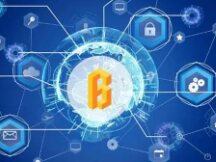Economic feasibility of blockchain technology
Ravi Menon, Chairman and CEO of the Central Bank of Singapore, delivered a speech at the Global Blockchain Business Conference in Singapore on October 9, 2017. The keynote speech will address new milestones in blockchain technology, examining applications of blockchain in transport management. , Financial Services Lending and Cross-Border Trade, highlights the progress of the Singapore Ubin blockchain project, and gives answers to Singapore and Ande Labang I did. Future technological collaboration.
An important element of trust in the construction of a fair blockchain
01
Trust is the foundation of any business venture.If there is no direct trust between the parties, the other option is to rely on reliable intermediate standards. In the traditional payment and settlement process, the operator of the intermediary is responsible for collecting and adjusting the balance of the payment participants.However, the medium reliability standard is not always available, and even if it were possible, many issues would arise., failure of intermediary organizations, collisions, etc.
The main changes in blockchain technology are:By building trust in a decentralized system, all parties can participate in the trustless exchange and all trading partners can control the world.
So how can a blockchain ensure that two parties to an exchange see the same world without third party proof?
First, the way data is closed and shared in blockchain technology allows for the balance of ideas from different parties.
The backup data is distributed to the nodes of the blockchain network.
Belief is not the religion of one party, but the trust of the needs shared by all parties.
Anyone can check for any inaccuracies in the data.
Second, the data can be well understood or digitally signed to avoid blockchain data interference.
A part in a blockchain can ensure that a part cannot trade it without someone else signing it.
Third, data is generated by smart contracts, which can be completed regularly and as needed.
Smart contracts are making the right decision.
Each party on the blockchain has agreed to the agreement in advance, and the contract successfully terminates the contract according to the agreement.
In fact, blockchain is a database that can provide evidence of who owns what at any given time and continuous data from any business.In other words, itdivide the ledger. Distributed Ledger (DLT) technology has gone far beyond the traditional blockchain application in Bitcoin and other cryptocurrencies and has the potential to transform many industries and markets. Currently, public attention is only drawn to cryptocurrencies, but in fact, in the short to medium term, widespread use of DLT is preferable.
Available use of distributed ledger technology
02 ib
DLT is especially useful for businesses that focus on protecting owners but not on the trustworthy intermediaries that exist, but where trusting intermediaries is not profitable or expensive.
As in the management chain:
DLT may offer a lower cost to complete the registration, certification, and tracking process.
All products are uniquely identified and shipped through the distribution system, and each product is identified, timed and entered in a transparent process.
In financial services, DLT is still being tested with various applications, including:
DLT may provide a better medium for lending agencies to collect information on customer loans from banks.
Singapore's insurance industry is exploring how DLT can help protect insurance fairness.
One of the most potential uses of DLT in financial services is customer recognition, known as the “Know Your Customer (KYC)” process.
Although banks have invested a lot of time and money in KYC, it has been difficult to detect and prevent money laundering, tax evasion and other financial irregularities.
DLT provides a better and more powerful way to identify markets with customers, providing the ability to share KYC tariffs across the industry.
In fact, the above is no longer a dream, but a fact that has happened.In Singapore, OCBC Bank, HSBC and Tokyo-Mitsubishi UFJ Bank jointly announced that they have completed the KYC blockchain project to reduce KYC competition, provide convenience to customers and improve facilities.
The real DLT killer app is really in cross border business.. We all know that when companies deal with many organizations in different regions, there is still no basis of trust and the DLT application allows multiple parties to work directly together to make cross orders cheaper, faster. and more secure.
Cross-border commerce is a good example of a DLT application. In Singapore, we explore two specialist applications: Financial Economics and Business History.
In the financial industry, DBS Bank and Standard Chartered Bank are exploring ways to use DLT to protect two bills while protecting consumer privacy.
In terms of business history, Singapore is exploring ways to use DLT to connect its domestic business platform to other countries (such as Hong Kong). This DLT-based business platform enables users to confidently exchange digital business information across borders.
Singapore's DLT ecosystem
03
Innovation and technology will be the main drivers of future development.The Central Bank of Singapore has partnered with the financial sector to create a smart financial environment with innovative and widely used technology.Singapore's DLT ecosystem is booming.
Currently, 50 local fintech startups are participating in the DLT domain in Singapore.
The University of Singapore is currently exploring various aspects of DLT.
Venture capitalists are looking for attractive DLT investment strategies.
Technology consulting firms and partners have developed practices or teams for DLT in Singapore.
One of the best ways to improve the ecosystem is to bring everyone together through collaborative work.The Central Financial Corporation of Singapore has been involved in these activities, helping companies come together to develop solutions.
Ubin project: Siv DLT rau Interbank payments
04 ib
The Ubin project is a good example of this collaboration and is a good example of a competitive event. The project is co-sponsored by the Central Bank of Singapore, Singapore Exchange, 10 banks, 6 technology companies and 6 campuses, and more than 150 DLT interns from the Ubin project.
The problem the project is trying to solve is:
During the full payment period, the exchange is usually done by a trustee, who is usually a central banker.
The issues raised by the Central Bank of Singapore are as follows:me Can we create a good bank balance of payments and contracts without the bank as a fiduciary?
Current project achievements:
Ubin Phase 1 ProjectWhile banks don't have to go through a central bank, they have successfully demonstrated that they can trade with others on the Ethereum-based model.The Central Financial Corporation of Singapore announced the digital representation of the Singapore dollar and placed it in the spreadsheet for internal discussions.
And in the second phase of the recently completed Yubin project,Our software design was also made for the knowledge of fair payment and integration in a form that protects corporate privacy.
The next goal of the Ubin project is to extend the app for cross-border payments and settlements. Today, cross-border payments rely on a network of foreign exchange banks. Banks hold each other's balances and decide by comparing relative ratios. However, cross-border trade poses problems such as the allocation of risk between competitors and income, and adjustment is the biggest headache. And when many banks are involved, the exchange can take several days, costing consumers dearly.
Therefore, we are exploring ways to link the Ubin project with other DLT banking companies to support cross-border payments.
Success helps improve performance, costs, speed, and risk management.
The bigger vision is to create a DLT-based payment system that will pave the way for all weather operations and enable instant transactions across borders.
Participation future
05 ib
The strong trade between Singapore and India offers many opportunities for joint ventures between Fintech companies and financial companies in Singapore and Andhra Pradesh. . Our banks can work together to develop new cross-border payment models to reduce payment times, streamline weather operations and reduce payment risk.
Now is the time for DLT partnerships and broader financial partnerships between Andhra Pradesh and Singapore. We hope that Singapore's fintech technology will provide solutions for the use of data processing in Andhra Pradesh, making it more efficient and profitable for the people of this new country.

Scan QR code with WeChat








